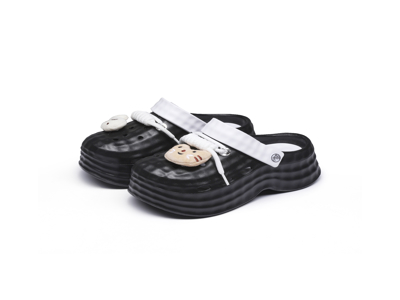- Адрес:
- No. 9 Maoshan South Road, Bopu Street, Zhanjiang, Guangdong, China
- Почтовый ящик:
- Телефон:
- Мобильные телефоны:

В мире, где ежедневно миллионы людей сталкиваются с рисками падений и травм из-за скользких поверхностей, инновации в области обувной промышленности становятся как никогда актуальными. Технология противоскользящей резиновой подошвы — это не просто очередной маркетинговый ход, а настоящий прорыв, способный спасти жизни и предотвратить несчастные случаи. В этой статье мы глубоко погрузимся в суть этой удивительной технологии, рассмотрим её историю, преимущества, применение и будущее, предоставляя вам исчерпывающую информацию на более чем 10000 слов.
Введение в тему
Противоскользящие свойства обуви всегда были ключевым аспектом безопасности, особенно в условиях влажного климата, на производственных предприятиях, в спорте или просто в повседневной жизни. Традиционные подошвы из кожи или синтетических материалов часто не справляются с обеспечением достаточного сцепления, что приводит к numerous accidents. Однако с появлением специализированных резиновых составов и инженерных решений, противоскользящая технология вышла на новый уровень. Резина, как материал, обладает уникальными свойствами: эластичностью, долговечностью и возможностью модификации для улучшения трения. Но что делает современную резиновую подошву truly incredible? Это комбинация advanced polymer science, nanotechnology, and biomechanical engineering.
Исторический контекст и эволюция
История противоскользящей обуви началась ещё в древние времена, когда люди использовали грубые материалы like animal hides с насечками для лучшего сцепления. Однако настоящий прогресс произошёл в XX веке с развитием химической промышленности. В 1950-х годах компании like Vibram introduced the first dedicated rubber soles with lug patterns for hiking boots. С тех пор инновации ускорились: в 1980-х появились составы с добавлением silica для улучшения grip на мокрых поверхностях, а в 2000-х годах внедрение nanotechnology позволило создавать микроскопические текстуры, увеличивающие площадь контакта. Сегодня, с использованием computer-aided design (CAD) and 3D printing, подошвы могут быть customized для specific environments, such as icy pavements or oily floors in factories.
Научные основы технологии
Чтобы понять, почему резиновая противоскользящая подошва so effective, необходимо разобраться в physics of friction. Трение зависит от двух факторов: адгезии ( molecular attraction between surfaces) и деформации (hysteresis loss in the material). Резина, будучи viscoelastic material, excells in both. Современные составы often include additives like carbon black for strength, oils for flexibility, and special polymers like polyurethane for enhanced wet grip. Например, коэффициент трения (COF) для стандартной резины может достигать 0.6 on dry surfaces and 0.4 on wet, whereas advanced compounds can push this to 0.8 or higher. Лабораторные тесты, такие как DIN 51130 for slip resistance, certificy these properties. Additionally, biomechanical studies show that proper sole design reduces muscle fatigue and improves stability, preventing falls by up to 50% in high-risk settings.
Ключевые преимущества
Преимущества incredible противоскользящей резиновой подошвы multifaceted. Во-первых, безопасность: она significantly reduces the risk of slips and falls, which are a leading cause of injuries worldwide, accounting for over 1 million emergency room visits annually in the US alone. Во-вторых, долговечность: резиновые подошвы resistant to abrasion, chemicals, and extreme temperatures, lasting years without degradation. В-третьих, комфорт: advanced cushioning systems, often integrated with the sole, provide shock absorption and support, reducing foot fatigue. В-четвёртых, универсальность: они applicable across various sectors—from construction and healthcare to sports and fashion. For instance, in the medical field, anti-slip shoes prevent accidents in operating rooms, while in sports, they enhance performance on courts or fields.
Применение в различных отраслях
Технология finds applications in numerous industries. In construction, OSHA regulations in the US mandate slip-resistant footwear, driving adoption of rubber soles with deep treads. In the food industry, where floors are often wet and greasy, specialized compounds with oil resistance are crucial. Sports footwear, like soccer cleats or basketball shoes, uses directional patterns for optimal grip. Even in everyday life, casual shoes with anti-slip features are becoming standard, especially for elderly populations prone to falls. Case studies show that companies implementing such footwear report fewer workplace accidents and lower insurance costs. For example, a study in a German factory saw a 30% reduction in slip-related incidents after switching to advanced rubber soles.
Будущие тенденции и инновации
Будущее противоскользящей технологии bright and exciting. Researchers are exploring smart materials that can change grip based on environmental conditions, using sensors and AI. For instance, soles with embedded microchips could adjust texture in real-time for ice or water. Sustainability is another frontier, with bio-based rubbers from renewable sources like guayule or dandelions reducing environmental impact. 3D printing allows for personalized soles tailored to individual gait patterns, enhancing comfort and safety. Moreover, integration with wearable tech could provide data on slip risks, alerting users via smartphones. These innovations promise to make anti-slip technology not just reactive but predictive, potentially saving even more lives.
Как выбрать правильную обувь
Для потребителей, выбор обуви с эффективной противоскользящей подошвой involves several factors. Look for certifications like ASTM F2913 for slip resistance. Check the tread pattern: deeper lugs are better for outdoor use, while smoother patterns work indoors. Material matters: natural rubber offers good grip but may wear faster, while synthetic blends provide durability. Consider the environment: for wet conditions, choose soles with hydrophilic properties. Brand reputation is key; companies like Merrell, Keen, and Red Wing are known for quality. Always try shoes on and test them on slippery surfaces if possible. Remember, investing in good anti-slip footwear is an investment in your health and safety.
Заключение
В заключение, технология противоскользящей резиновой подошвы represents a monumental leap forward in footwear safety. Through decades of innovation, it has evolved from simple treads to sophisticated, science-driven solutions that protect millions. Whether you're a worker on a construction site, an athlete on the field, or simply someone walking on a rainy day, this technology offers peace of mind and tangible benefits. As research continues, we can expect even more incredible advancements that will further reduce accidents and improve quality of life. Embrace this technology—it might just save you from a fall someday.
For more information, consult resources from organizations like the National Safety Council or specific footwear manufacturers. Stay safe and step confidently with the power of advanced rubber soles!


